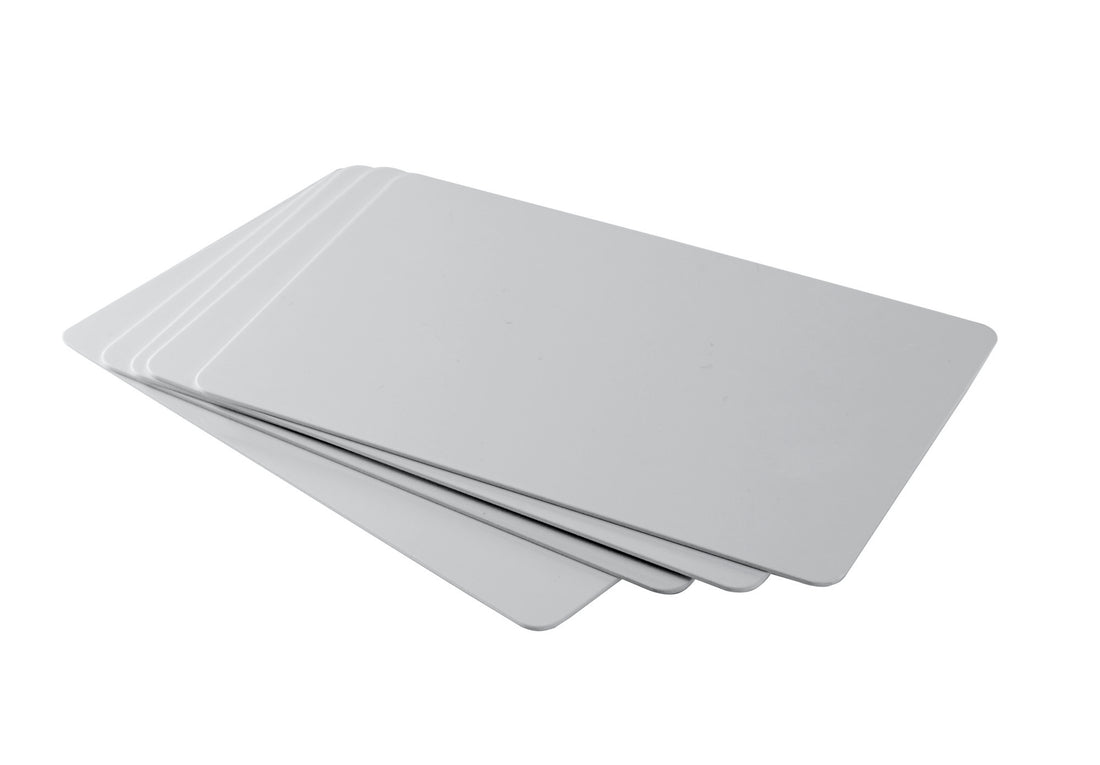There are quite a number of ID card formats available to choose from.
At first glance it would seem that the selection is slightly overwhelming, however we will take a closer look at the most common card sizes. Hopefully you will have a better understanding of the formats and applications, and therefore will be able to decide the right card for your needs.
In addition to selecting the right size card for your company ID badge, consideration must also be taken to ensure your printer and software can accommodate the size selected.
Lets have a look at the most common card sizes:
CR-50: (3.5 inches length x 1.75 inches width) This format is usually used in hotel rooms for access control
CR-60: (3.25 x 2.312)
CR-70: (2.875 x 2.125)
CR-79: (2.051 x 3.303) mainly used for Proximity cards
CR-80: (3.370 x 2.125) Also known as ID-1, This card is the most popular of the standard card format and most commonly used.
CR-90: (3.63 x 2.37)
CR-100: (3.88 x 2.63) Known as “oversized” cards, commonly used for conventions, trade shows or any situation that requires higher visibility.
ID-2: (4.134 x 2.913) used for French and other ID cards, visas
ID-3: (4.921 x 3.465) used for Government ID cards
ID-000: (0.984 x 5.906) SIM cards
The above list shows the sizes of the cards expressed in length and width.
Let’s now discuss thickness. Thickness in ID cards is measured in “mils” ( not be confused with the metric measurement “millimeter”, a “mil” is a unit of thickness equivalent to one thousandth of an inch). A credit card is around 30 mils thick or 3/100 of an inch. This is equivalent to 0.76mm in metric.
ID cards can go from 10 mil all the way up to 65 mil in some cases.
Cards at 10-15 mil are generally used for temporary or light use (hotel key cards, business cards, etc).
20-24 mil are usually found in transit pass and bus ticket type cards.
30 mil is the most common thickness for ID cards, access control, credit cards, and license applications.
55 mil: Not a common thickness these days, there aren’t a lot of printers that can actually print on a 55 mil card. This card was mainly used for luggage tags.
60 and 65 mil: are also known as “Clamshell” proximity cards, mainly used for access control and door entry.
In conclusion, the recommended size for a company ID would be a CR-80 card with a 30mil thickness. This is considered the standard size for identification cards as codified by the International Organization for Standards (ISO) in the specification document ISO 7810 (Identification cards-physical characteristics).
Most card printers are designed to print on CR-80 (a number of printers can also print on CR-79 and CR-100 as well).
From a practical point of view, the CR-80 card due to it’s “credit card” like size fits easily into an employee’s pocket making it a convenient choice as well.

